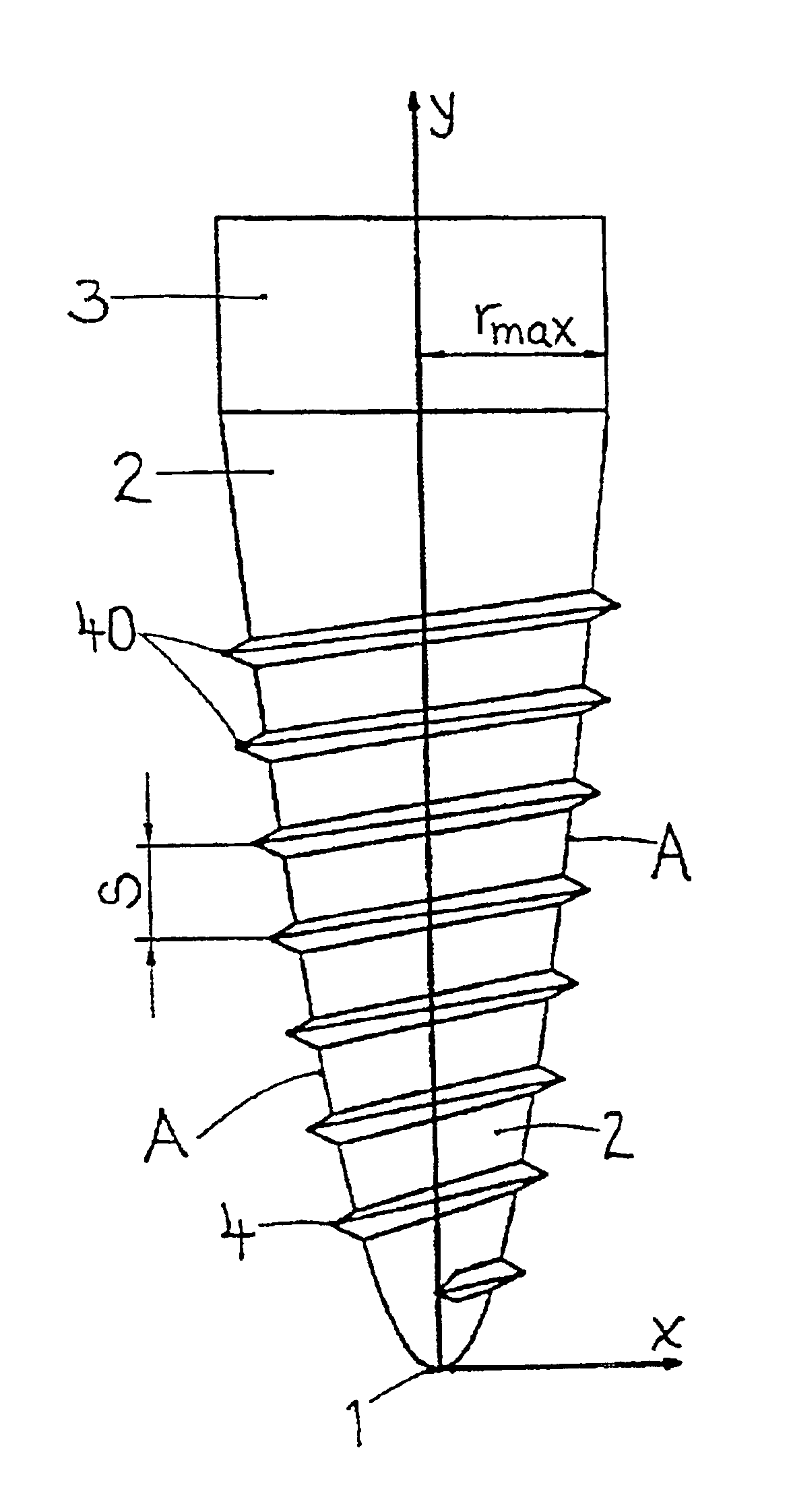Threaded intraosseous dental implant
a dental implant and intraosseous technology, applied in the field of dental implants, can solve the problems of insufficient implant lifetime, inconvenient implant fitting, and inability to achieve the desired postoperative primary stability, and achieve the effect of increasing the primary stability of fitted implants
- Summary
- Abstract
- Description
- Claims
- Application Information
AI Technical Summary
Benefits of technology
Problems solved by technology
Method used
Image
Examples
Embodiment Construction
There follows a detailed description of an illustrative embodiment of the dental implant according to the invention, with reference to the attached drawings.
At the very bottom of the implant is the apically situated implant tip 1 to which the root part 2 extends from the coronal direction, which root part 2 is intended to be fitted in the jawbone. Adjoining the top of the root part 2, at the theoretical ridge line 5, is the implant neck 3 which extends in the coronal direction and is intended to lie inside the gingiva. From the implant tip 1 to a point below the ridge line 5, the root part 2 is provided with an outer thread 4 which is preferably self-cutting and has the pitch S. The outer thread 4 ends at a distance below the ridge line 5; the distance is preferably in the range of from 1.0 mm to 4.0 mm. The root part 2 has a substantially parabolic outer contour A with the implant tip 1 as vertex.
The following dimensions can be defined on the implant:l→total length, for example 12....
PUM
 Login to View More
Login to View More Abstract
Description
Claims
Application Information
 Login to View More
Login to View More - R&D
- Intellectual Property
- Life Sciences
- Materials
- Tech Scout
- Unparalleled Data Quality
- Higher Quality Content
- 60% Fewer Hallucinations
Browse by: Latest US Patents, China's latest patents, Technical Efficacy Thesaurus, Application Domain, Technology Topic, Popular Technical Reports.
© 2025 PatSnap. All rights reserved.Legal|Privacy policy|Modern Slavery Act Transparency Statement|Sitemap|About US| Contact US: help@patsnap.com


